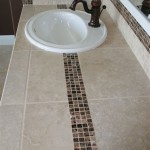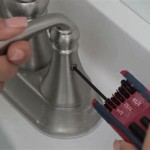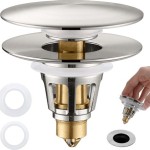Cleaning a Smelly Bathroom Sink: A Guide to Eliminating Odors
A smelly bathroom sink can quickly become a source of discomfort and embarrassment. The lingering odor may be due to a buildup of bacteria, food particles, hair, or soap residue. Fortunately, with the right cleaning methods and a little bit of elbow grease, you can effectively eliminate foul smells and restore your sink to its pristine condition. This article provides a comprehensive guide to cleaning a smelly bathroom sink, outlining the key steps and essential techniques to make your bathroom a refreshing space once more.
Understanding the Source of the Odor
The first step in cleaning a smelly bathroom sink is understanding the source of the odor. Identifying the culprit behind the unpleasant smell allows you to target your cleaning efforts most effectively. Common sources of odor include:
- Soap scum and residue: Soap scum is a common culprit in bathroom sinks, as it can trap bacteria and create an unpleasant odor.
- Food particles: Food particles, especially if they are organic and left to decompose, can produce a foul smell.
- Hair and debris: Hair, toothpaste residue, and other debris can accumulate in the sink's drain and contribute to odor.
- Mold and mildew: Warm, moist environments can encourage mold and mildew growth, leading to a musty or earthy smell.
- Sewer gases: In some cases, the odor may originate from sewer gases, indicating a leak or blockage in your plumbing system.
By identifying the source of the odor, you can effectively target your cleaning efforts and eliminate the problem at its root.
Cleaning the Sink and Drain
Once you have identified the source of the odor, you can start cleaning the sink and drain. This will involve removing visible debris, scrubbing the surface, and potentially using specialized cleaning agents.
Step 1: Remove Visible Debris
Start by removing any visible debris from the sink and drain. This includes hair, toothpaste residue, food particles, and soap scum. You can use a small trashcan to gather the debris or a wet paper towel to wipe it away.
Step 2: Scrub the Sink Surface
Use a mild dish soap and a soft-bristled brush to scrub the sink surface. Pay particular attention to the areas around the drain and any crevices where bacteria and grime may be hiding. Rinse the sink thoroughly with water after scrubbing.
Step 3: Clean the Drain
The drain is often the main source of odor, so it's crucial to clean it thoroughly. You can use a drain cleaner specifically designed for bathroom sinks to remove grease and residue. Pour the cleaner into the drain and allow it to sit for the time specified on the product label. After the recommended dwell time, flush the drain with hot water. If the drain is still clogged or smelly, you can use a plunger or a drain snake to remove any obstructions.
Preventative Measures
Once you've cleaned your smelly bathroom sink, it is essential to take preventative measures to avoid future odor problems. These measures include:
1. Regular Cleaning
Clean your bathroom sink regularly, ideally once a week or after each use. This will help prevent a buildup of soap scum, food particles, and other debris, minimizing the chances of odor.
2. Drain Maintenance
Clean your bathroom sink drain regularly, such as by pouring baking soda and vinegar down the drain followed by hot water. This can help prevent hair, soap scum, and other debris from accumulating in the drain and causing blockages and odors.
3. Use Proper Ventilation
Ensure proper ventilation in your bathroom by using a fan or opening a window. This will help reduce moisture and humidity, preventing the growth of mold and mildew, which can contribute to unpleasant odors.
4. Avoid Overfilling
Avoid overfilling the sink with water, as this can contribute to splashing and water getting trapped, potentially leading to odor.
Conclusion
Cleaning a smelly bathroom sink involves a combination of cleaning techniques and preventative measures. By regularly cleaning the sink and drain, employing proper ventilation, and avoiding overfilling, you can minimize the chances of foul odors and maintain a fresh and inviting bathroom space. However, if the odor persists despite these measures, it is best to consult a professional plumber to investigate potential plumbing issues.

How To Clean A Stinky Sink Drain By Home Repair Tutor
:max_bytes(150000):strip_icc()/__opt__aboutcom__coeus__resources__content_migration__mnn__images__2018__08__sink_drain-351af8e441034f319fe07f00c091d8b6.jpg?strip=all)
How To Clean A Smelly Drain Naturally

How To Clean A Smelly Sink

Prevent Drain Smells Deodorize Your Drains

How Can I Help A Stinky Bathroom Sink Drain Cleaning More

How To Clean Stinky Drains Liquid Plumr

Why Your Drain Smells And How To Fix It Fast

How To Clean A Smelly Sink Drain The Organization House

How To Clean Smelly Drains Living By Homeserve

Why Your Bathroom Sink Drain Smells
Related Posts







